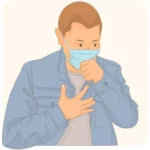What Is Hypoxemia?
Contents
Hypoxemia is defined as a low level of oxygen in the blood, when this happens, the tissue, and organs are not able to work properly.
Oxygen is an essential element for life and without oxygen, humans can survive for a few minutes only.
It can happen due to many reasons and often causes hypoxia (blood is not supplying enough oxygen to the tissues).
But hypoxia can also happen due to other reasons such as anemia.
Anemia is a condition, where the body lacks enough healthy RBC, which leads to irregular heartbeat and can cause a heart attack.
However, hyponatremia, hypokalemia, and hypercalcemia also refer to the amount in the blood.
It can become a life-threatening condition if treatment is not found as soon as possible.
Hypoxemia vs Hypoxia
| Hypoxemia | Hypoxia |
| It is defined as a decrease in the oxygen level in the blood | Whereas hypoxia is low oxygen levels in your tissues |
| Patients can develop hypoxemia without hypoxia. | |
| Extreme hypoxemia can be called anoxemia | Whereas, extreme hypoxia can be called anoxia |
| It can happen due to any reason such as high altitude, V/Q mismatch, etc | It can happen in the absence of hypoxemia if blood flow to an organ or tissue is disrupted |
Reasons
If any cause that influences the rate or volume of air entering the lungs and any cause that influences the transfer of air from the lungs to the blood may cause hypoxemia.
Ventilation-Perfusion Mismatch – This occurs when there is an imbalance b/w lung ventilation and blood flow, even the normal lung includes:
- exercise
- aging
- diseases that affect the lungs
- Cirrhosis
Ventilation – The movement of air between the environment and the lungs via inhalation and exhalation.
If there is low ventilation, so there will not be enough oxygen delivered to the alveoli for the body’s use, this can cause hypoxemia.
Shunting – It refers to blood that bypasses the pulmonary circulation – which means – that the blood does not receive oxygen from the alveoli.
Some conditions that can lead to hypoxemia include:
- Anemia
- COPD
- ARDS (Acute respiratory distress syndrome)
- metabolic alkalosis (a state of decreased carbon dioxide in the blood)
- asthma (8)
- heart disease or defect in children or adults
- pneumonia
- muscle weakness
- pulmonary edema, where excess fluid in the lungs
- Pulmonary embolism (blood clot in an artery in the lung)
- damaged lungs like pulmonary fibrosis
- sleep apnea
- Stroke
- Structural deformation, where body structure restricts breathing and leads to hypoxia.
Environmental factors that influence body oxygen levels are:
- high altitude
- diving
- suffocation
- anesthetics
- air depleted of oxygen has also proven fatal
Who is more at risk of it?
There are some conditions people or patients who are at high risk of hypoxemia include:
- Heart disease
- lung disease
- travelers who are more likely to love traveling in mountains
- COPD (Chronic obstructive pulmonary disease)
- asthma
- smokers
- some other medical conditions people
Some other conditions that can also increase the risk of hypoxemia include:
- Influenza
- pneumonia
- Covid-19
A covid is known as a coronavirus (a virus that causes an infection in your nose, throttle, or mostly effect on lungs)
Where the person has difficulty in breathing, which is the main cause of it, and 2020, and 2021 were the worst years for all.
NOTE: A hypoxemia person might experience shortness of breath, headache, confusion, or restlessness.
Signs and Symptoms
Depending on the severity and duration, hypoxemia can lead to mild symptoms or lead death.
Hypoxemia may cause symptoms such as:
- respiratory distress includes breathlessness
- shortness of breathing (2)
- dizziness
- fast breathing
- rapid heartbeat
- cyanosis (where body tissue color change)
- headache
- nail clubbing
- cough or wheezing
Management
Since hypoxemia involves a low oxygen level in the blood, so the aim of treatment is to increase the oxygen level.
To increase oxygen levels, a healthcare provider may use “supplemental oxygen” via oxygen tanks or an oxygen concentrator.
Whereas, oxygen therapy uses an oxygen mask to give sufficient oxygen to your lungs (6)
In severe hypoxemia, such as ARDS, doctors may use a machine that breathes for you (7)
Patients often use CT (Classic computed tomography) as a reference for applying personalized ventilatory management with severe ARDS.
ARDS (acute respiratory distress syndrome) is one of the most severe forms of acute hypoxemic respiratory failure and lung injury.
If hypoxemia, doesn’t resolve then this condition may lead to refractory hypoxemia, then the doctor may perform medications.
If there is a medical condition that is a reason for hypoxemia, then the doctor may provide treatment according to the illness for ex:
- Inhalers and bronchodilators or other medicine to help people with lung diseases like COPD.
- oxygen cylinder for covid fight people, where lungs oxygen capacity decreases at a very low level and covid dose to prevent it.
- CPAP (continuous positive airways pressure) for sleep apnea.
- Before going at a high altitude or deep underwater, prescribed medication may be given.
How to prevent hypoxemia?
If you are in a medical condition that can lower your blood pressure, so first talk to your doctor before going to high altitude.
If you are a traveler and love to go to mountain peaks, then definitely go with some oxygen supplement.
NOTE: Give your body sufficient time to adjust to the environment before climbing or traveling at a low oxygen level.
Other ways that you can prevent it by making these healthy lifestyles include:
- By choosing a healthy lifestyle
- regular exercise
- eat well-balanced diet
- maintain your BMI
- reduce stress
- Stop smoking – It is one of the second reasons for reducing oxygen levels, so make sure to avoid smoking.
- Manage your health condition – If you are on any medication or medical condition so make sure to adopt a healthy lifestyle.
- Avoid air pollution – which becomes a reason for low oxygen levels in the lungs.
Check Out – Lung Cancer: Potential Reasons, signs, and symptoms
BOTTOM LINE
Hypoxemia involves a low oxygen level in the blood, so the aim of treatment is to increase the oxygen level.
It refers to a low level of oxygen in the blood which occurs due to some medical issue and is seen in mountaineers.


